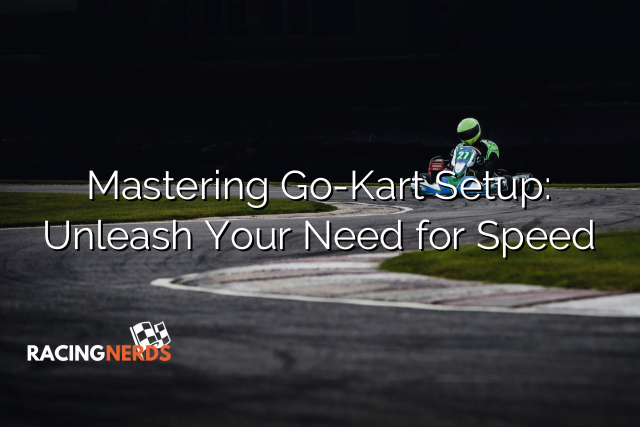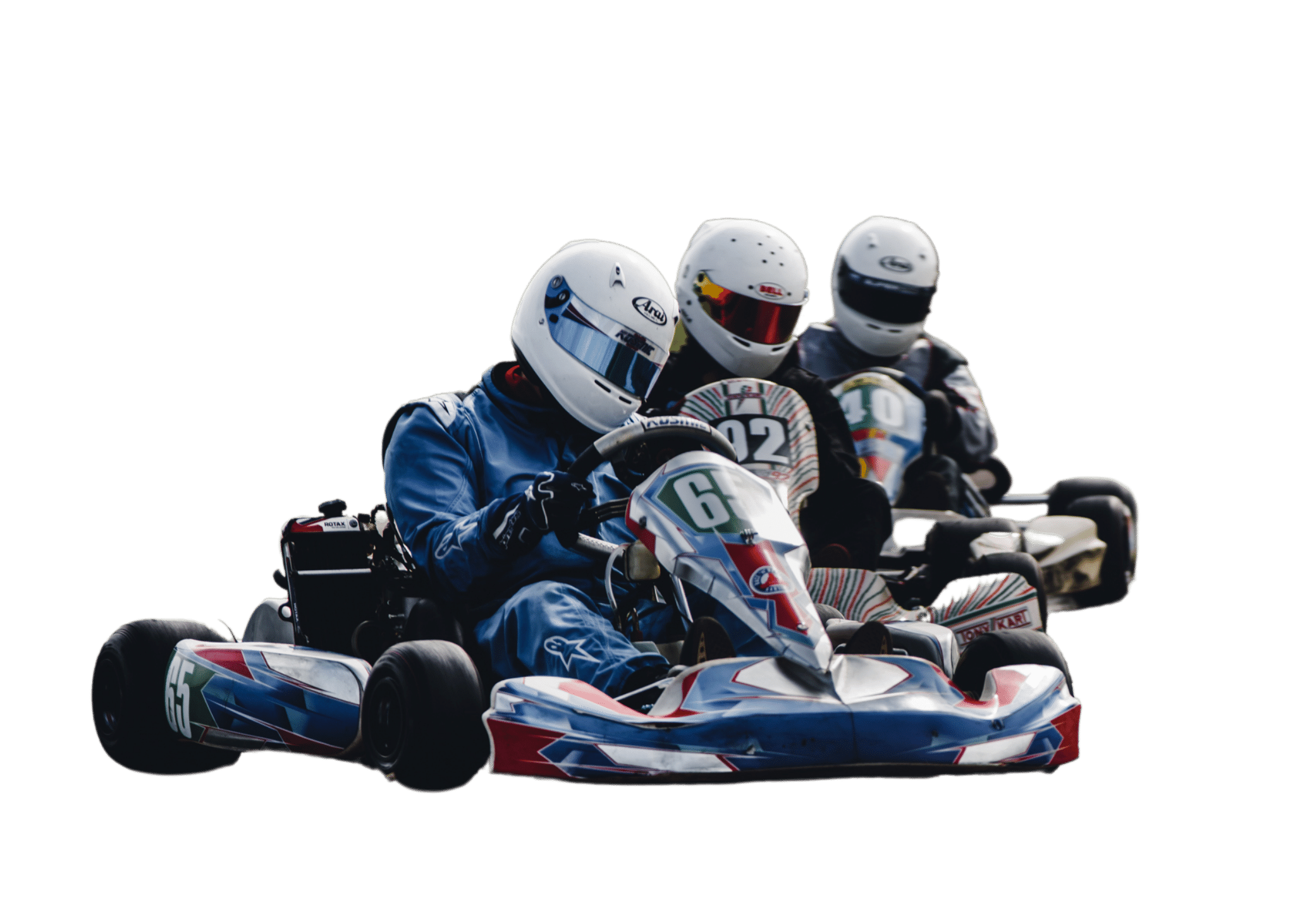
You’ve felt the fierce focus needed to finesse your go-kart around the track, but have you truly tapped into the technical tweaks that transform a good lap into a great one?
It’s not merely about mashing the pedal to the metal; it’s about understanding the intricate interplay between man and machine that masters of the circuit exploit.
As you grasp the gears and gaze at the gauntlet ahead, consider the countless components you can control to cut corners closer and command your kart with confidence. Adjusting your axle, calibrating your chassis, and fine-tuning your fuel flow aren’t just tweaks—they’re the tools that can propel you past the pack.
So strap in and set your sights on success; you’re about to uncover the secrets that could catapult your karting capabilities to new heights. Stay tuned to discover how mastering the mechanical minutiae might just unlock the velocity you’ve been chasing.
To optimize your go-kart’s performance, you’ll need to master the balance between top speed and acceleration by choosing the appropriate gear ratio for the track’s layout and conditions.
Balancing power delivery hinges on optimizing gear selection, which is dictated by the interplay between the front and rear sprocket sizes.
A smaller gear ratio elevates your top speed yet sacrifices acceleration, while a larger ratio enhances acceleration at the expense of peak velocity.
Track specifics, whether it’s the tight technicalities or the long stretches that demand high speeds, and the prevailing conditions—be they dry or slick—inform your gear ratio decision.
Precision in this optimization enables the most efficient transfer of power from engine to tarmac, ensuring your kart’s competitiveness.
Finding the optimal balance between speed and acceleration for your go-kart hinges on the careful selection of gear ratios that complement the specific demands of the track. You must weigh the importance of weight distribution, as it drastically affects your kart’s dynamics. Fine-tuning throttle response is also critical; it should be sharp enough for quick sprints but smooth for maintaining speed through corners.
| Aspect | Impact on Kart Performance |
|---|---|
| Gear Ratios | Balances top speed & acceleration |
| Weight Distribution | Optimizes grip and stability |
| Throttle Response | Enhances control & power delivery |
| Track Demands | Dictates setup adjustments |
Your technical prowess is on display as you analyze each variable. Every adjustment is a precise step towards a perfectly balanced machine, tailored for the track’s unique challenges.
Adapting your go-kart setup to the nuances of track conditions is crucial for maintaining optimal performance throughout varying weather and surface changes. Your tire selection is paramount; different compounds and treads respond distinctly to wet or dry surfaces. Opt for softer compounds for added grip in cooler conditions and harder tires when track temperatures soar, which reduces wear and preserves handling.
Additionally, harness driver techniques to compensate for evolving grip levels. In wet conditions, adjust your driving line to avoid slippery patches and maximize traction. Precise throttle control and smooth steering inputs are essential to prevent understeer or oversteer. Analyze telemetry data to refine your approach, ensuring each lap capitalizes on the dynamic nature of the track.
Your ability to adapt is as critical as your kart’s mechanical setup.
While adjusting your driving techniques to track conditions is critical, refining your go-kart’s caster settings can further enhance your control and grip through the corners. By adjusting the caster, you’re directly influencing the weight distribution optimization, which is paramount for maintaining a responsive turn-in grip.
| Caster Adjustment | Effect on Kart Handling |
|---|---|
| Increased Caster | Improves initial turn-in grip, enhances weight transfer |
| Decreased Caster | Reduces turn-in effort, may decrease front wheel grip |
| Balanced Caster | Aims for optimal weight distribution, neutral handling |
| Extreme Caster | Can lead to unpredictable handling, requires fine tuning |
Adjust the caster thoughtfully; it’s a complex interplay between steering responsiveness and tire contact patch. Achieving the ideal setting demands a technical and analytical approach, ensuring that each turn is negotiated with precision.
To optimize your go-kart’s handling, it’s essential to adjust the camber angles based on track conditions and driving style. Here’s how you can refine your kart’s performance:
Having fine-tuned your kart’s camber angles, it’s crucial to also consider how seat positioning impacts the kart’s balance and handling characteristics. The precision with which you apply seat positioning techniques can drastically alter your performance on the track. A seat too far forward can compromise rear traction, while a seat too far back might hinder your turning agility.
Effective seat positioning enhances driver comfort, enabling you to remain focused and in control. The table below summarizes key aspects:
| Aspect | Forward Positioning | Rearward Positioning |
|---|---|---|
| Driver Comfort | Improved leg reach | Extended arm reach |
| Handling Characteristic | Quick front response | Increased rear grip |
| Balance | Weight over front | Weight over rear |
| Track Requirement | Tight turns | Long straights |
| Kart Response | Agile | Stable |
Adjust with precision, considering your driving style and the track’s demands.
Adjusting the seat height in your go-kart can critically influence the center of gravity and, consequently, the overall handling dynamics. The seat position adjustment isn’t just about comfort; it’s a strategic move for weight distribution optimization. Here’s what you need to consider:
While seat height plays a pivotal role in handling dynamics, chassis flex is equally critical for effective cornering in go-karts. Understanding the relationship between chassis flex and cornering is essential. A stiffer chassis offers less flex, which can lead to reduced grip in the corners, especially on a slick track. Conversely, a more flexible chassis enhances grip by allowing the frame to twist, effectively managing tire contact with the track.
| Factor | Less Chassis Flex | More Chassis Flex |
|---|---|---|
| Cornering | Less grip, more sliding | Enhanced grip, better turning |
| Tire Wear | Uneven, increased on sliding | More even distribution |
| Track Conditions | Better for high-grip surfaces | Preferable on slick surfaces |
Chassis flex also influences tire wear. Excessive flex can cause premature wear on the inside tires, while too little flex may overly stress the outside tires. Analyze the track conditions and adjust your chassis flex to optimize both cornering performance and tire longevity.
Understanding the dynamics of wheel lift is crucial for optimizing your go-kart’s cornering capabilities and achieving faster lap times. Here’s how you can master wheel lift:
To tackle understeer or oversteer in your go-kart, you’ll need to fine-tune the balance between grip at the front and rear ends of the chassis. Understeer, where your kart doesn’t turn enough, suggests insufficient front grip. Conversely, oversteer, indicated by the rear sliding out, points to excessive rear grip.
Adjusting suspension components is key in addressing these issues. For understeer, consider reducing front tire pressure to increase the contact patch or soften the front suspension to enhance grip. To combat oversteer, you might stiffen the rear suspension or increase rear tire pressure to diminish grip.
Improving cornering performance demands a methodical approach. Small incremental changes, followed by testing and analysis, will lead to an optimized balance and a kart that responds predictably to your inputs.
After fine-tuning your kart’s balance to address understeer or oversteer, harnessing telemetry data can further sharpen your competitive edge by providing detailed performance insights. Here’s how you can use telemetry effectively:
Selecting the appropriate data logger for your go-kart setup hinges on evaluating its compatibility with your kart’s electronics and the specific metrics you aim to track. You’ll want to ensure that the data logger features are comprehensive enough to capture the nuances of your performance. Look for a device that allows for precise analyzing of telemetry data, such as throttle position, brake pressure, and lap timing.
When comparing data loggers, assess the sensor inputs, memory capacity, and ease of data extraction. High-resolution data capture is critical for pinpointing performance issues and making informed adjustments. It’s not just about gathering data, but being able to interpret it effectively.
The right data logger transforms raw numbers into actionable insights, optimizing your go-kart’s speed and handling.
Tire pressure affects your kart’s grip; too high, you’ll slide, too low, you’ll drag. Check with a pressure gauge, adjust to tire compounds, and alter for wet or dry conditions to optimize handling.
Your kart’s backbone, its chassis, determines your race destiny. Chassis flexibility and material durability are pivotal; stiffer materials boost precision but reduce forgiveness, while more flexible ones enhance grip at the cost of directness.
You should systematically test setups, meticulously document each change, and analyze data logging results to optimize your go-kart’s performance efficiently during practice sessions. This approach saves time and improves precision on the track.
You think you’re just steering a kart, but without proper driver hydration and muscle endurance, you’ll handle curves like a floppy noodle. Fitness is key to maintaining precise control and peak go-kart performance.
When making setup changes, always prioritize safety. Inspect brakes meticulously and check harness integrity. Ensuring these are uncompromised maintains your protection while chasing performance gains on the track.
Now, you’re not just a driver; you’re a virtuoso of velocity, wielding data as your baton.
With each tweak and turn, your kart sings a symphony of speed, precision at your fingertips.
Remember, it’s not just the machine, it’s the maestro inside.
So harness that telemetry, fine-tune your steed, and let the track bear witness to your artistry.
Unleash your need for speed—your podium awaits.

